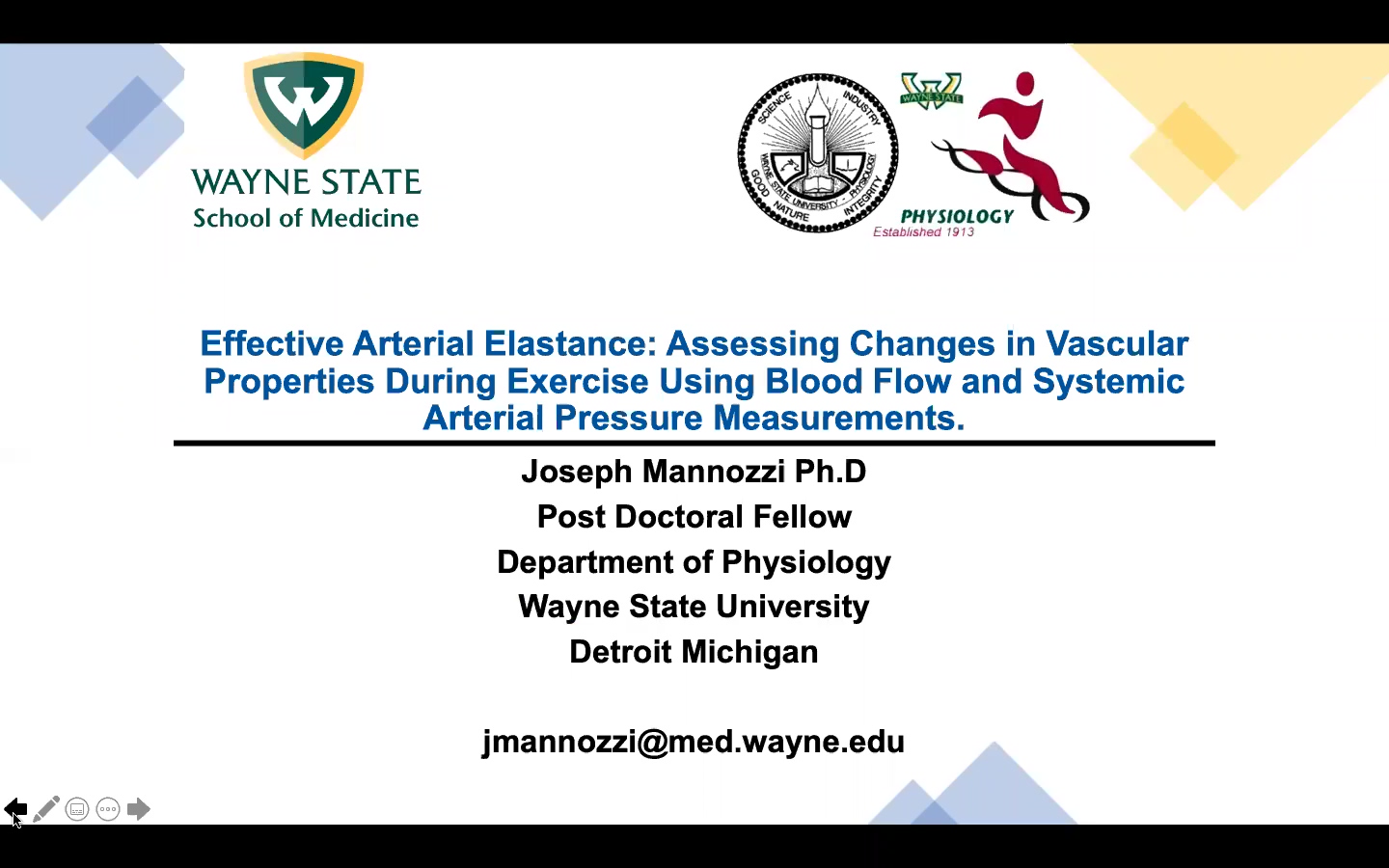Transonic Webinar - Dr. Joseph Mannozzi Presents: Effective Arterial Elastance: Assessing Changes in Vascular Properties During Exercise
On November 17, 2020, our Research Division continued our client-lead webinar series that, much like our blog series, attempts to bring our community a venue where new scientific approaches, technologies and ideas can be shared and discussed.
 In this webinar, we heard from Dr. Joseph Mannozzi who received his PhD in 2020 from Wayne State University and is currently a post-doctoral fellow in the lab of Dr. Donal O’Leary. Dr. Mannozzi’s recent PhD defense was partially on the topic of sympathetically mediated vascular changes during exercise in heart failure. Dr. Mannozzi’s goal is to research and develop translational models of cardiovascular and metabolic disease. His objective is to determine how cardiovascular function and metabolic function effect each other and alter sympathetically mediated cardiovascular reflexes during exercise.
In this webinar, we heard from Dr. Joseph Mannozzi who received his PhD in 2020 from Wayne State University and is currently a post-doctoral fellow in the lab of Dr. Donal O’Leary. Dr. Mannozzi’s recent PhD defense was partially on the topic of sympathetically mediated vascular changes during exercise in heart failure. Dr. Mannozzi’s goal is to research and develop translational models of cardiovascular and metabolic disease. His objective is to determine how cardiovascular function and metabolic function effect each other and alter sympathetically mediated cardiovascular reflexes during exercise.
Throughout the webinar, Dr. Mannozzi highlighted the essential role that measurements of vascular blood flow – using our gold standard ultrasonic flow probes – play in the measurement of elastance. If you are looking for tips and tricks associated with measuring vascular blood flow in a chronic and conscious setting, we encourage you to watch the webinar in full here.
From this webinar, we learned:
- Muscle metaboreflex activation increases effective arterial elastance and ventricular maximal elastance thus maintaining ventricular – vascular coupling.
- Heart failure attenuates ventricular maximal elastance and increases baseline levels of elastance causing ventricular vascular uncoupling.
- Heart failure attenuates muscle metaboreflex induced increases in ventricular elastance, and significantly enhances effective arterial elastance.
- The above exacerbates the already uncoupled ventricular – vascular relationship leading to significant reduction in stroke work.
- Reduced stroke work limits energy transfer and likely contributes to the attenuated ability to raise cardiac output during exercise in heart failure.
Dr. Mannozzi’s efforts in the O’Leary lab focus on neural and hormonal control mechanisms of arterial blood pressure, heart rate, cardiac output, regional blood flows and sympathetic nerve activity during dynamic exercise in heart failure and hypertension. The Lab has diligently progressed their surgical techniques over the past 25 years to deliver consistent meaningful data in conscious animals – in fact, they have been a leading lab worldwide in this effort. To collect these data trends, the lab utilizes the 400-series flow meter and vascular flow probe, which allows for monitoring blood flow in units of volume, not velocity.
In our question and answer period, Dr. Mannozzi addressed a host of different inquiries from the live attendees, such as:
- His overall study design including surgical approach, group size and study duration
- Volume validation techniques used in the lab
- Secondary measures helpful for assessing ventricular vascular coupling
- Equipment considerations necessary for conducting similar research in other models
In pursuit of the webinar, Dr. Mannozzi also answered 15 questions that we did not have time to get to, through direct correspondence.
We would like to thank Dr. Mannozzi for taking the time to speak with us, present his research and help the community better understand the role that vascular blood flow can plan in a chronic and conscious settings. To connect with Dr. Mannozzi, or to learn more about his research, visit their website.
For more information related to our webinar series, to watch past events, register for future events - even to suggest topics of discussion - please visit our website.




